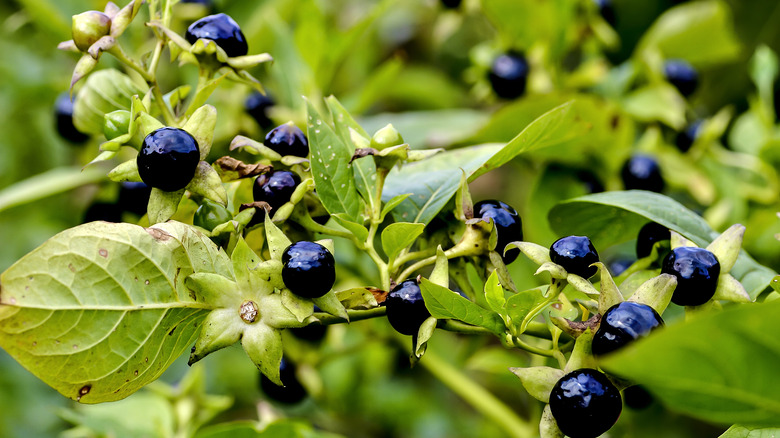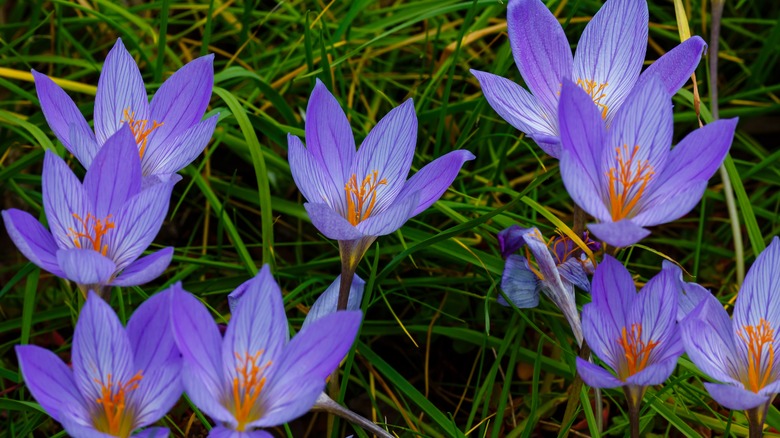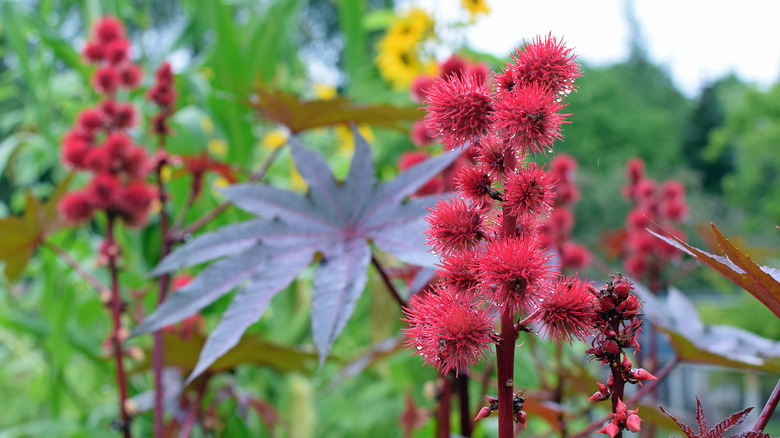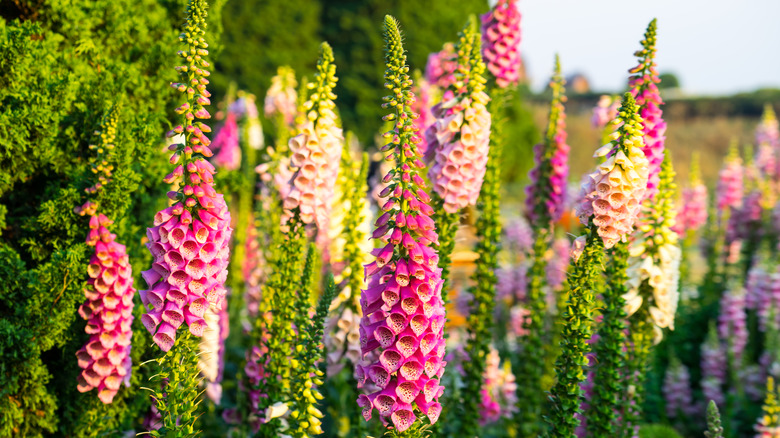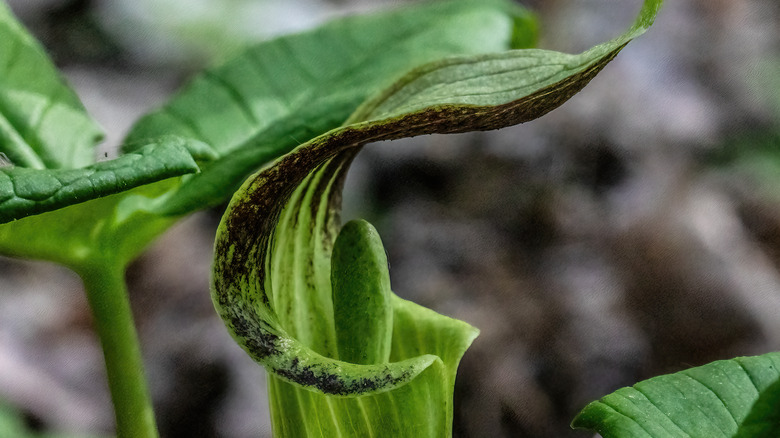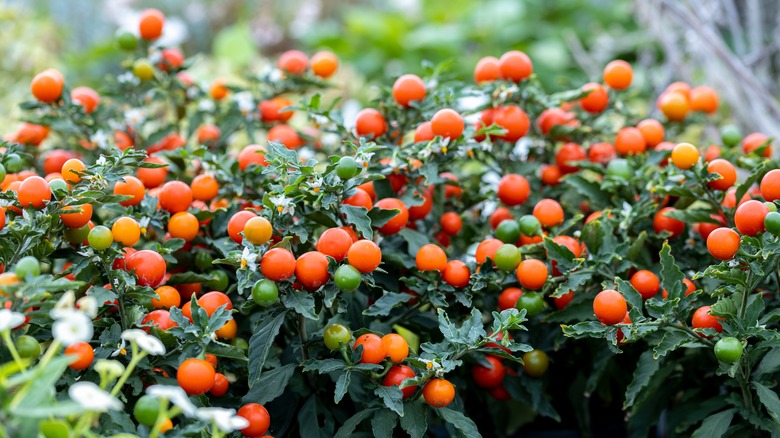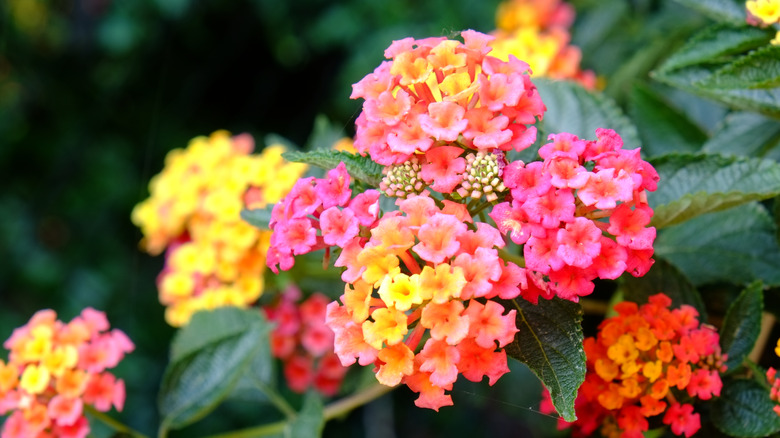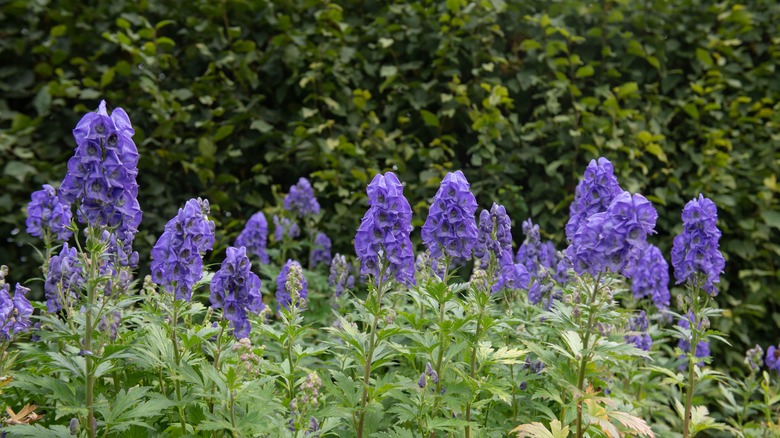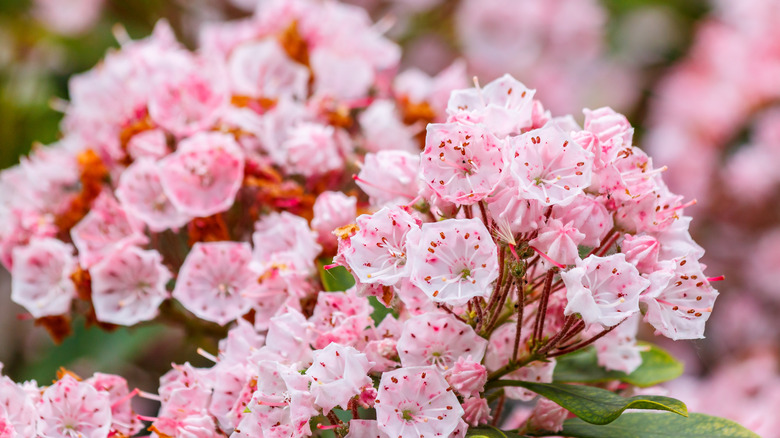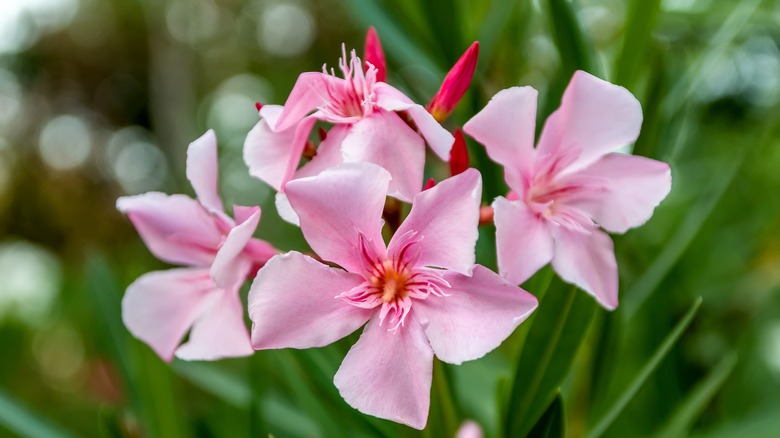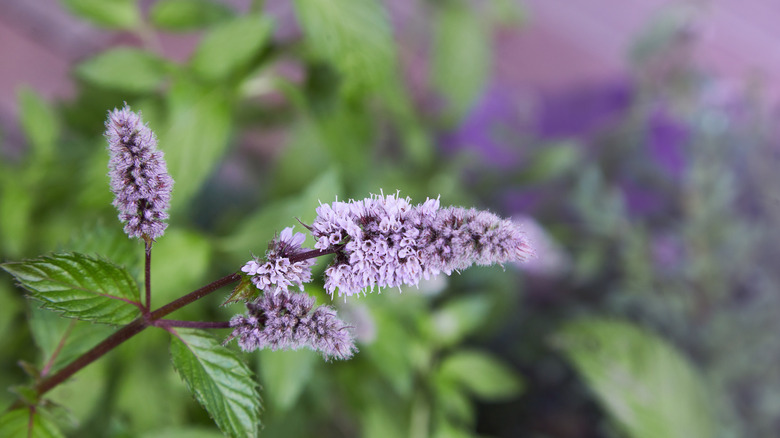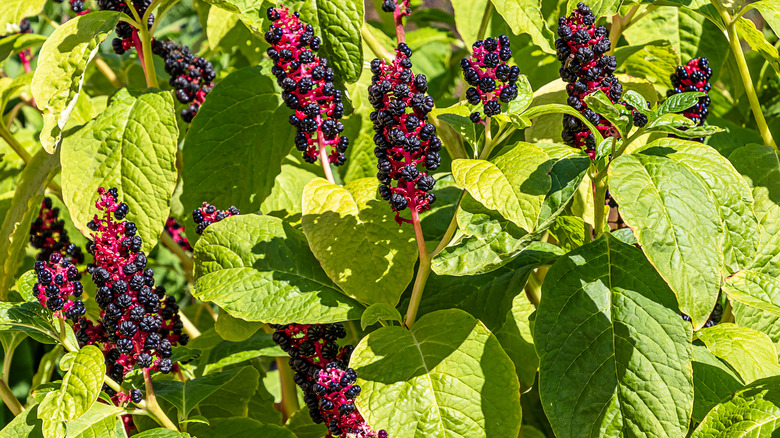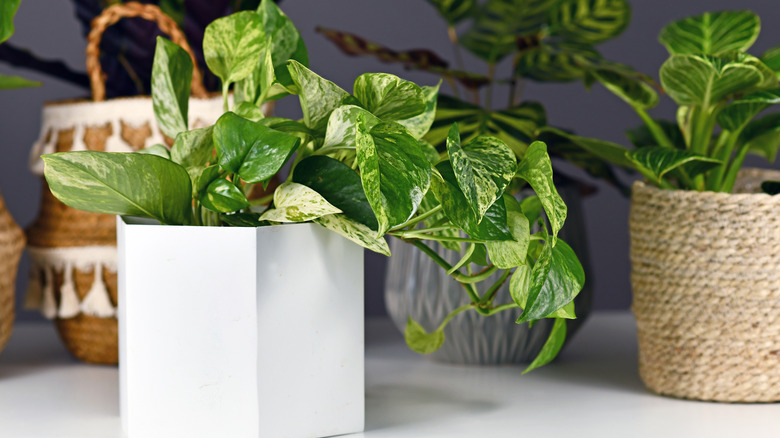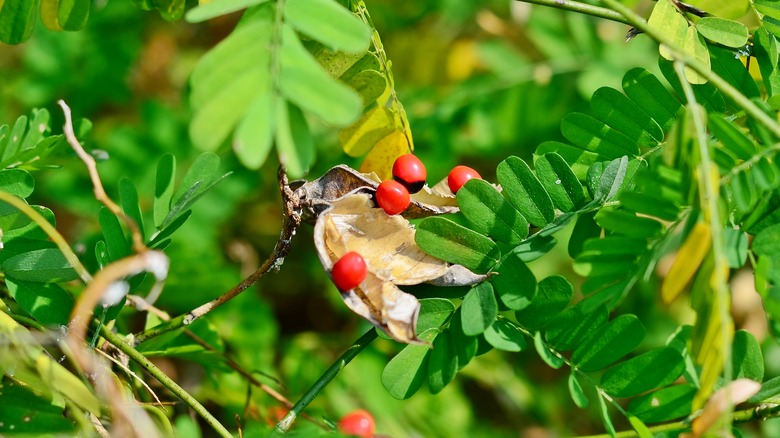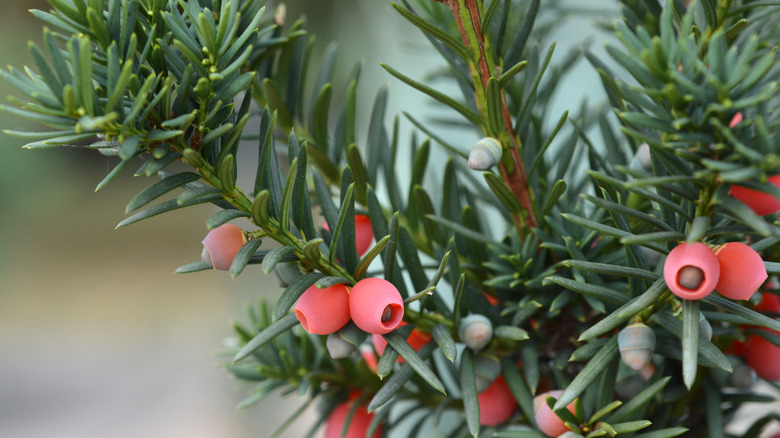Poisonous Plants That Look Beautiful In Gardens
Starting a garden in your home can be nerve-wracking when you don't know where to start or what plants you want to grow. While most folks plant small shrubs, fruit trees, or flowers, they tend to stray away from plants that are harmful. Yet, growing poisonous plants can actually make your garden flourish with color. While it can be worrisome to grow them in your home, they can add a lot of personality to your green environment. You just have to remember where you planted them and prevent anyone from getting too close.
Once they grow to their full potential, you'll notice how even the most harmful plants can be the most beautiful. There are some things to keep in mind before you start planting, however. According to Gardening Know How, you should make sure to plant them in a secluded area away from your non-poisonous plants, research precisely how you should go about planting them so that you don't get harmed, and keep the area safe with warning signs to let others know not to go near them. Here are some of the best poisonous plants you can grow in your garden to make it look beautiful.
1. Autumn crocus
The autumn crocus (colchicum autumnale) comes in various colors such as violet, pink, white, and yellow that bloom the best during fall, hence the name, and are part of the Lily family. They grow from a small bulb that should be planted in late summer or early fall, 2 to 3 inches below the soil under shrubs, claims The Garden Diaries. They bloom in full sun to partial shade in USDA zones 6 to 10 with well-draining, silty soil, and grow up to 6 inches tall before they start flowering.
2. Castor bean
The extremely poisonous castor bean (ricinus communis) is a large leafy shrub with spiky round flowers. They're great to plant along the fenced area of your backyard to prevent any harmful accidents. When growing the Castor beans, they should be planted after the last frost in rich soil with compost, explains The Kokoro Garden. They grow up to 40 feet tall in USDA zones 9 to 11 and should be planted in a sunny area to grow to their full potential.
3. Deadly nightshade
The name of this plant screams poisonous, deadly nightshade (atropa belladonna) is so harmful that every part of the plant is poisonous. It was heavily used for medicinal purposes as a form of anesthesia and by assassins to poison people, via Advice From the Herb Lady. You can grow the plant in USDA zones 5 to 9 in well-draining soil with full sun to partial shade. They grow best in June when they fully bloom, then in August, they'll start growing berries and can grow up to 4 feet tall.
4. Foxglove
The foxglove (digitalis purpurea) are beautiful tube-shaped flowers that grow in various shades of pink, purple, yellow, and red. They work best with a bed of flowers or are used as a pop of color in green foliage. Their leaves and flowers are poisonous if consumed, but they can be touched without causing harm. They grow up to 4 feet tall in full sun to partial shade at the beginning of Spring, according to Gardening with Charlie Nardozzi. They need to be well watered in moist, slightly acidic soil in USDA zones 4 to 9.
5.Jack-in-the-pulpit
A great way to remember the name jack-in-the-pulpit (arisaema triphyllum) is to think of the fast food restaurant Jack-in-the-box, although this plant is defiantly not safe to ingest. Jack-in-the-pulpit is a curved green perennial that has spikes and grows flowers, states Michigan Bulb, and looks at its best next to small shrubs. It can grow from 12 to 24 inches in USDA zones 4 to 9 with partial to full shade. They should be planted in moist, slightly acidic soil during March to fully bloom in April and May.
6. Jerusalem cherry
An ornamental fruit tree is a great addition inside or outside your home. The Jerusalem cherry plant (solanum pseudocapsicum) grows an exponential amount of fruit on each branch. Although the colorful fruit looks edible, they shouldn't be consumed since they're poisonous, warns Guide to Houseplants. Jerusalem cherry trees grow in direct sunlight in the summer, however, they should be stored inside during the fall and winter. They can be planted in a regular potting mix and watered enough to keep their soil moist. They grow up to two feet and will thrive in USDA zones 8 and 9.
7. Lantana
Growing lantana (lantana camara) plants in your garden will make your space look like a rainbow since the flowers come in almost every color, including purple, yellow, orange, blue, red, and white. They have soft round petals surrounded by giant spiky leaves. Lantanas grow best in USDA zones 7 to 11 and bloom in the spring, notes The Herb Exchange. They should be planted in moist, slightly acidic soil and enjoy full sun to partial shade so that they could grow to their normal 6 feet.
8. Monkshood
If you've ever seen any tv shows with werewolves, then you will likely know about monkshood (aconitum spp.) or wolfsbane. The entire plant is poisonous when consumed or if it comes in contact with open cuts, so handle them with care when using them in your garden. In moist soil, they grow up to 4 feet tall with purple blooms, according to Easy Shade Gardening. They thrive in the cooler climates of USDA zones 3 to 7, in a partial to a full shady area, and bloom during the summer to late fall.
9. Mountain laurel
To give your garden some texture, try growing mountain laurels (kalmia latifolia). Their shape resembles small tea cups, but are entirely poisonous if consumed. They're speckled and come in colors such as pink, purple, red, and white. Mountain laurels grow the best in USDA zones 5 to 9 in cool, moist, acidic soil, claims Gardenista. If you grow them in your backyard, the shrubs will grow to at least 10 feet and bloom in late spring with moderate to partial shade.
10. Oleander
Oleander plants (nerium oleander) bloom with gorgeous white and pink flowers that will make your garden brighter and happier. They make a good border plant in your front yard, or in your backyard with other shrubs. They love the warm weather, so growing them in May will keep them lasting through October, states Plantopedia. Oleanders can grow up to 9 feet in a pot or straight in the ground in direct sunlight. They will grow in USDA zones 8 to 10 and need good chalky soil that contains clay in order to get the most from the plant.
11. Pennyroyal
Low-growing shrubs such as pennyroyals (mentha pulegium) can work perfectly in your backyard in empty spaces or near taller trees. They have beautiful green woody branches with purple flowers. They're best grown in USDA zones 5 to 9 and bloom from June through October since they love the warmer weather, via Seed Needs. They grow low, only reaching 1-foot tall, and need moist, well-draining soil with compost. They should be planted in direct sunlight with partial shade in the evenings.
12. Pokeweed
One of the coolest-looking fruit plants is pokeweed (phytolacca americana). It has giant green leaves with caterpillar-like berries that grow throughout the tree. The berries are poisonous to humans if ingested, but the leaves are often consumed as a salad once they've been boiled three times, notes Roys Farm. Pokeweed can be grown in USDA zones 4 through 8 in direct sunlight with moist soil. They can grow up to 10 feet tall throughout their blooming season from May to October.
13. Pothos
Another very easy-to-grow houseplant is pothos (epipremnum aureum.) They have similar characteristics to evergreen plants, except Pothos are mildly toxic if ingested. This tropical vine is a great choice for hanging baskets and has large heart shaped leaves that can sometimes have yellow, gold, or white tips. They can survive in any soil that's well-draining, and need bright, indirect sunlight, claims Almanac. Pathos plants are best grown in USDA hardiness zones 10 through 12.
14. Rosary pea
Rosary pea plants (abrus precatorius) are large green perennial shrubs that have small, deep red berries that look like ladybugs. Their fruit is highly poisonous to humans, pets, and livestock, but are often grown to add some color to a garden. They can grow from 6 to 20 feet tall in USDA zones 8 through 11, according to The National Gardening Association. They need slightly acidic soil and full sun to partial shade.
15. Yew
If you're looking into incorporating some topiary into your garden, yew plants (taxus spp.) are a great way to go since they have thick branches with needles that can be shaped easily. They can be grown as tall trees or small shrubs, and have unique-looking red berries that shouldn't be consumed. Yew plants can grow between 2 to 40 feet tall in humus-rich soil and are drought-tolerant, as noted by Gardening with Charlie Nardozzi. They can grow in USDA zones 4 and 6 and should be planted in the spring or summer.
